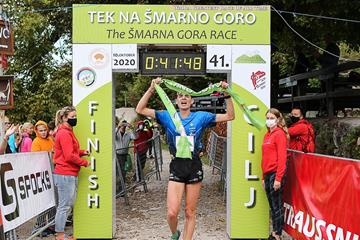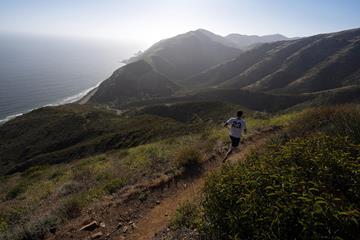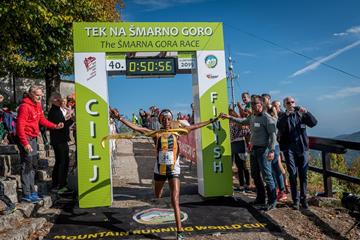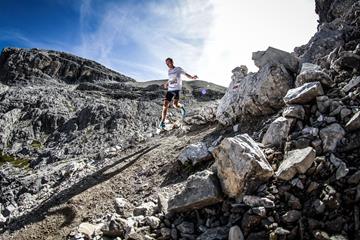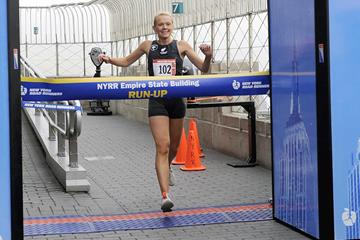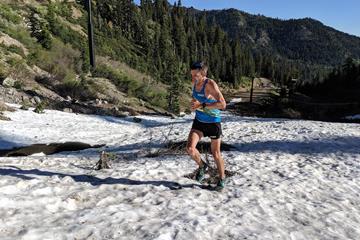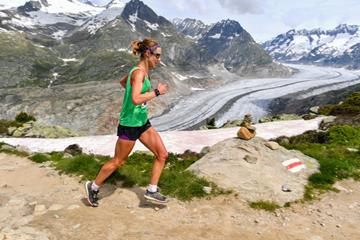 Countdown
Countdown
 Countdown
Countdown
Official website: World Mountain Running Association
How it works
The philosophy of mountain running is based on the time factor, how to reach the finish taking the defined way as fast as possible.
Mountain races take place over an infinite variety of distance, ascent, descent and terrain. Distances range from short 15-minute sprints to long several hour treks, and there are courses that suit every ability and age group, and are designed to eliminate danger. Equipment is not allowed, so bags, sticks, ropes, compasses or similar equipment are not allowed.
IAAF rule 250.10 defines the distances and heights for men, women, and juniors for both uphill only and uphill/downhill courses.
History
Mountain running is a worldwide sport and a discipline of athletics. The World Mountain Running Association (WMRA) was born in 1984 as the International Committee of Mountain Running (ICMR). In 1985, it first staged ‘the World Trophy’, attracting entries from more than 30 countries. In 2002, the IAAF Congress officially recognised it as an International Competition as defined by IAAF Rule 1 and in 2009 the name was changed to the Mountain Running World Championships, with nowadays more than 40 nations taking part.
Four mountain running continental championships (Africa, Europe, North America, South America) are held every year, plus Commonwealth Championships and Balkan Championships. WMRA annually stages a Long Distance Challenge, a Youth International Cup and a Grand Prix, while a World Masters Mountain Running Championships is organised together with the WMA.
Did you know
Many races in the Alpine region take place in ski resorts where there are high-level facilities and ski lifts for transport down. Here the races start in the resort and finish at a high level – called ‘uphill only’ races. In many other regions, interest in mountain running centres on the mountain village or town where the race starts and finishes, usually where there are no high level facilities – these are referred to as ‘uphill/downhill’ races. There are also races that have considerable descent but finish at a high level – a mixture of both of the above courses.
Gold standard
Jonathan Wyatt won six World Championship individual titles: 1998, 2000, 2002, 2004, 2005, 2008 and one silver medal (2006). All the races were uphill races except 2005 in Wellington when he won an up and down race, on home soil. He won also one silver medal (2005) and two bronze medals (1999 and 2000) as member of New Zealand team. In total, he won nine medals: six gold, one silver and two bronze. Wyatt also won the Grand Prix series and the Long Distance Mountain Running Challenge.
Marco De Gasperi
De Gasperi won six individual gold medals at the World Championships: five in the senior category (1997, 1999, 2001, 2003, 2007 – all up and down races) and one in the junior division (1996 – uphill race).
As a member of the Italian team he also won a lot of gold medals, 11 gold as a senior (1997, 1998, 1999, 2000, 2001, 2002, 2003, 2004, 2007, 2008 and 2011) plus two gold as a junior (1995 and 1996). Note: in 2005 he didn’t run the World Mountain Running Championships.
De Gasperi also won three silver medals (2006, 2009, 2012) and one bronze as a member of the Italian senior team (2010). In total, he won 23 medals (19 gold, three silver and one bronze) at the World Championships.
Isabelle Guillot
At the World Championships Isabelle Guillot won four gold medals (1989, 1991, 1993 and 1997) which is the same as two other women, Austrians Gudrun Pflueger (1992, 1994, 1995, 1996) and Andrea Mayr (2006, 2008, 2010 and 2012).
Individually Guillot won also three silver (1994, 1995 and 1996) and two bronze (1988 and 2006). As a member of the French team, Guillot won four gold, one silver and three bronze, while as members of the Austrian Team Pflueger won one gold and two silver and Mayr won only two silver medals.
